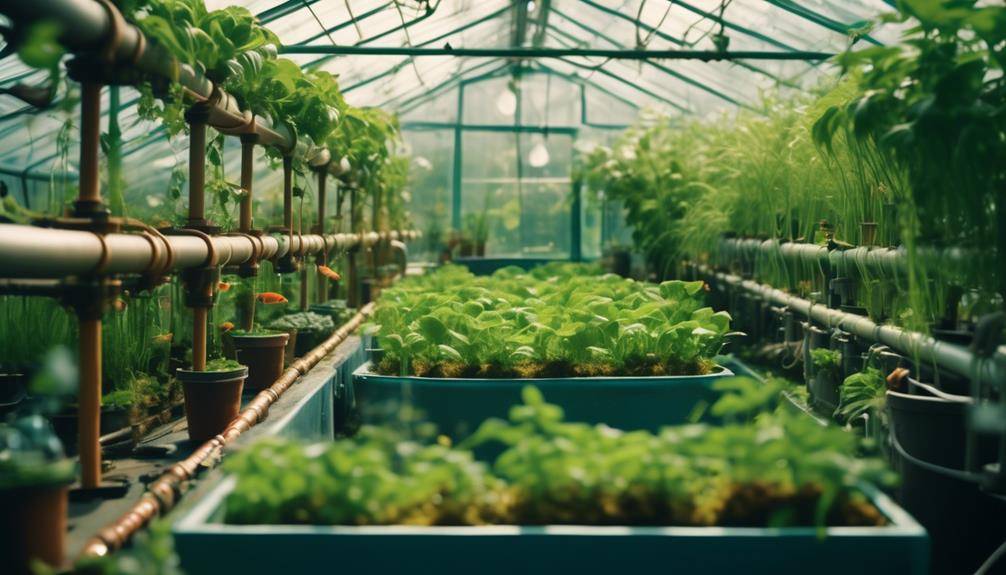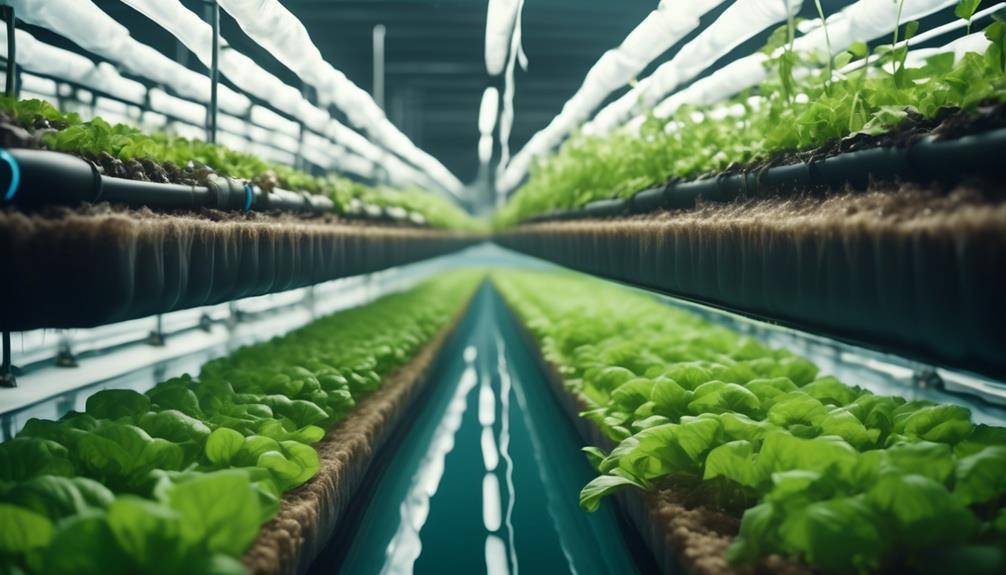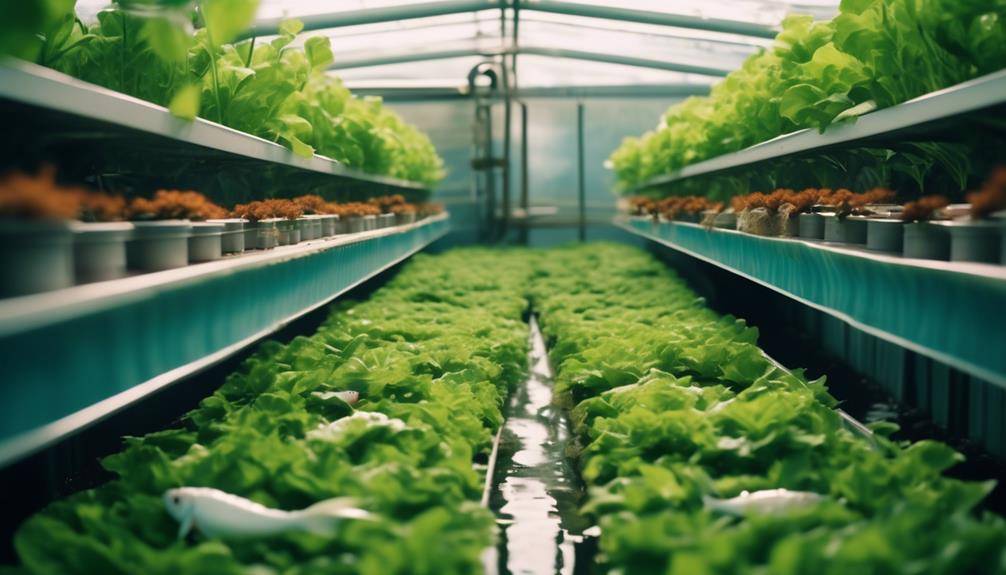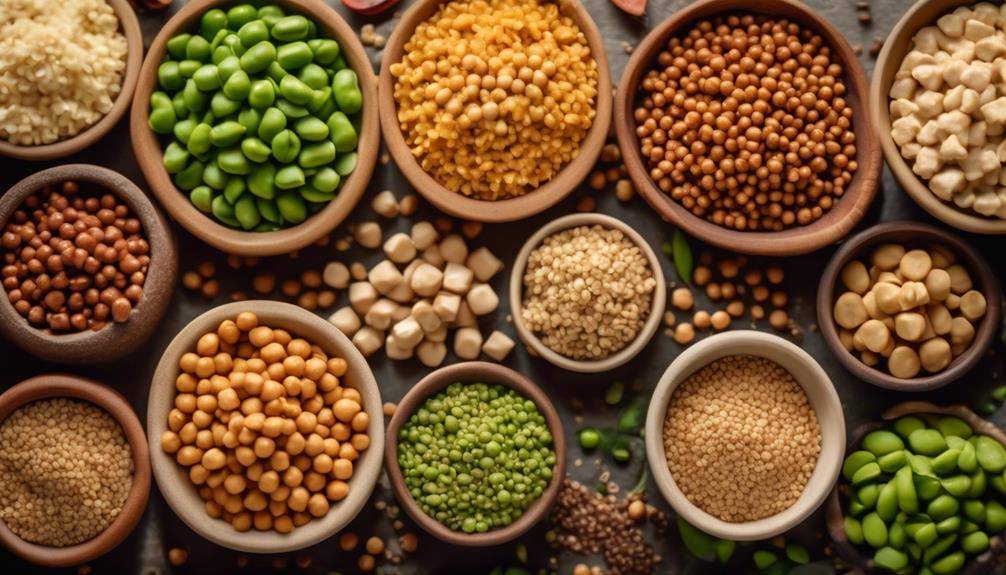First Introduction To Aquaponics In Farming

Introduction To Aquaponics In Farming; Imagine a world where farming is not just about yields and profits, but also about sustainability and harmony with nature. Aquaponics, the synthesis of aquaculture and hydroponics, offers a glimpse into this future. In this method, fish and plants form a symbiotic relationship, working together to create a self-sustaining ecosystem. But how does it all work? And how can you implement this innovative farming technique? Get ready to dive into the world of aquaponics and discover the endless possibilities it holds for the future of agriculture.
Aquaponics: A Sustainable Farming Method
Aquaponics is a highly sustainable farming method that combines aquaculture and hydroponics to create a symbiotic system where fish waste provides nutrients for plant growth, resulting in a closed-loop, resource-efficient system. This innovative technique addresses some of the sustainability challenges faced by traditional farming methods and holds promise for future advancements in agriculture.
One of the key sustainability challenges in traditional farming is the excessive use of water. Aquaponics offers a solution by utilizing a recirculating system that dramatically reduces water consumption. The water in the aquaponics system is continuously recycled, with only small amounts lost due to evaporation or plant uptake. This not only conserves water but also minimizes the strain on water resources, making aquaponics a more sustainable choice.
Another challenge in traditional farming is the release of excess nutrients into the environment, leading to pollution and degradation of ecosystems. Aquaponics tackles this issue by utilizing the waste produced by fish as a valuable resource. As fish excrete waste, it is converted into nutrients through a natural process, which is then absorbed by the plants for growth. This symbiotic relationship between fish and plants not only eliminates the need for chemical fertilizers but also prevents nutrient runoff into water bodies, making aquaponics an environmentally friendly farming method.
The future advancements in aquaponics hold great potential for further improving its sustainability. Researchers are exploring ways to optimize the nutrient cycling process, develop more efficient filtration systems, and enhance fish health and growth. Additionally, advancements in automation and control systems can help optimize operations and minimize resource consumption. These ongoing advancements will contribute to the continued development and adoption of aquaponics as a sustainable farming method.
The Basics of Aquaponics
To understand the basics of aquaponics, it is essential to grasp the symbiotic relationship between fish and plants in this innovative farming method. Aquaponics is a system that combines aquaculture, or fish farming, with hydroponics, the practice of growing plants without soil. The science behind aquaponics lies in the nitrogen cycle and the natural processes that occur within the system.
In an aquaponics system, fish waste is broken down by beneficial bacteria into nitrate, a form of nitrogen that plants can readily absorb. As the fish produce waste, it is pumped into a grow bed, where the plants’ roots act as a natural filter, removing the harmful substances and utilizing the nutrients. This mutually beneficial relationship allows the fish to live in a clean environment while providing the necessary nutrients for the plants to grow.
Water quality plays a crucial role in the success of an aquaponics system. Maintaining the proper pH level, temperature, and oxygen levels is vital for the health of both the fish and the plants. pH levels should be maintained between 6.8 and 7.2 to ensure optimal nutrient absorption by the plants. Temperature should be kept within a range that is suitable for the specific fish and plant species being cultivated. Adequate oxygen levels are necessary for the fish to breathe and for the beneficial bacteria to thrive.
Regular testing of water parameters and monitoring water quality are essential tasks in aquaponics. By maintaining optimal water conditions, you can ensure the health and productivity of your fish and plants. Understanding the science behind aquaponics and the importance of water quality will allow you to create a sustainable and productive system for growing fish and plants in harmony.
The Role of Aquaculture in Aquaponics
Aquaculture plays a vital role in the success and functionality of an aquaponics system. Here are three key ways in which aquaculture contributes to the effectiveness of aquaponics:
- Fish as Nutrient Producers: In an aquaponics setup, fish are not just a source of food but also serve as nutrient producers. Through their waste, fish produce ammonia, which is then converted by beneficial bacteria into nitrates. These nitrates serve as a vital source of nutrients for the plants in the system. By utilizing fish waste as a natural fertilizer, aquaculture helps to create a sustainable and efficient method of nutrient cycling in aquaponics.
- Maintaining Water Quality: The health and well-being of the fish in an aquaponics system is crucial for the success of the entire system. Aquaculture plays a crucial role in maintaining optimal water quality. Fish help to regulate the nitrogen cycle by producing waste, which is then processed by bacteria. This helps to keep the water clean and prevents the buildup of harmful substances. By ensuring good water quality, aquaculture promotes the growth of healthy plants and fish in the system.
- Economic Viability: Aquaculture in aquaponics offers economic benefits by creating additional revenue streams. The fish grown in the system can be harvested and sold as a source of income. This diversification of products provides farmers with a sustainable way to generate income while also producing fresh vegetables and herbs. Moreover, the integration of aquaculture and agriculture in aquaponics systems allows for efficient use of resources, such as water and space, thereby increasing overall productivity and profitability.
Aquaculture plays a crucial role in aquaponics by providing nutrients for plants, maintaining water quality, and offering economic opportunities. By harnessing the synergy between fish and plants, aquaponics offers a sustainable and efficient method of agriculture that holds great potential for the future.
The Role of Hydroponics in Aquaponics
Now let’s discuss the role of hydroponics in aquaponics. Hydroponic systems, which involve growing plants in nutrient-rich water instead of soil, play a crucial role in aquaponics setups. By combining hydroponics with aquaculture, you can create a symbiotic relationship where the fish waste provides nutrients for the plants, while the plants help filter the water for the fish. This integration not only maximizes the use of resources but also allows for year-round cultivation and higher crop yields.
Hydroponic Systems Explained
Hydroponic systems play a crucial role in aquaponics, providing an efficient and sustainable method of cultivating plants without the use of soil. Here are three key aspects of hydroponic systems in aquaponics:
- Hydroponic Techniques: Hydroponics involves growing plants in a nutrient-rich water solution, allowing for precise control over the growing conditions. Techniques like nutrient film technique (NFT), deep water culture (DWC), and drip irrigation are commonly used in aquaponics. These techniques maximize the efficiency of nutrient uptake by plants, leading to faster growth and higher yields.
- Nutrient Management: In hydroponics, nutrients are provided directly to the plants through the water solution. In aquaponics, these nutrients come from the waste produced by fish in the system. Proper nutrient management is crucial to maintain a balanced ecosystem. Monitoring and adjusting nutrient levels ensure that plants receive the necessary elements for healthy growth while preventing nutrient imbalances that could harm fish and plants.
- Water Conservation: Hydroponic systems in aquaponics use significantly less water compared to traditional soil-based farming. The recirculating nature of the water in the system allows for continuous nutrient cycling and minimizes water wastage. Additionally, the water can be reused, reducing the overall water consumption and environmental impact.
Benefits of Combining Hydroponics
Combining hydroponics with aquaponics offers numerous benefits, enhancing the efficiency and sustainability of farming systems. By incorporating hydroponic techniques into aquaponics, farmers can optimize their crop yields and reduce water usage. Hydroponic systems allow for precise control over nutrient delivery, ensuring that plants receive the exact amount of nutrients they need for optimal growth. This eliminates the need for excess fertilizers, minimizing environmental pollution. Additionally, hydroponic techniques promote faster plant growth, enabling farmers to harvest crops more frequently. This increases overall productivity and profitability. Furthermore, hydroponics eliminates the use of soil, reducing the risk of soil-borne diseases and pests. By combining hydroponics with aquaponics, farmers can create a closed-loop system that maximizes resource efficiency and promotes environmental sustainability.
The Symbiotic Relationship Between Fish and Plants
In aquaponics farming, fish and plants have a symbiotic relationship that allows for a mutually beneficial exchange of nutrients and support for optimal growth. This unique relationship is the key to maximizing crop yield in aquaponics systems. Here’s how it works:
- Nutrient Cycling: In aquaponics, fish waste contains high levels of ammonia. This waste is converted by beneficial bacteria into nitrites and then nitrates, which are essential nutrients for plant growth. The plants absorb these nitrates through their roots, effectively filtering the water and removing harmful substances for the fish. This nutrient-rich water is then returned to the fish tank, completing the cycle.
- Natural Fertilization: The fish waste acts as a natural fertilizer for the plants, providing them with a constant supply of nutrients. Unlike traditional farming methods, where synthetic fertilizers are often used, aquaponics harnesses the power of nature to nourish the crops. This not only reduces the need for chemical inputs but also creates a healthier and more sustainable farming system.
- Enhanced Growth: The symbiotic relationship between fish and plants in aquaponics promotes rapid and robust growth. The plants receive a continuous supply of nutrients, resulting in healthier and more productive crops. In return, the plants help to maintain water quality by absorbing excess nutrients and preventing the buildup of harmful substances. The fish benefit from this clean and oxygen-rich environment, ensuring their well-being and growth.
Benefits of Aquaponics in Farming
To fully understand the benefits of aquaponics in farming, it is important to recognize the significant advantages this innovative system offers for both plant growth and fish health. One of the key benefits of aquaponics is its suitability for urban areas. Traditional farming methods require vast amounts of land, which is often scarce in urban environments. Aquaponics, on the other hand, can be implemented in smaller spaces, making it an ideal solution for urban farming.
Another major advantage of aquaponics is its ability to address water scarcity. With traditional farming methods, water is often wasted through evaporation and runoff. In aquaponics, water is continuously recycled through the system, resulting in minimal water usage. This closed-loop system not only conserves water but also reduces the need for external irrigation, making it an environmentally friendly solution.
Furthermore, aquaponics provides a more efficient use of resources. The waste produced by the fish is broken down by bacteria, converting it into nutrients that are readily available for the plants. This natural fertilization process eliminates the need for synthetic fertilizers, reducing the environmental impact of farming and minimizing the risk of chemical contamination.
Aquaponics also offers improved plant growth and fish health. The plants receive a constant supply of nutrients, resulting in faster growth and higher yields. Additionally, the water in the system is constantly monitored and filtered, maintaining optimal conditions for the fish. This controlled environment minimizes the risk of diseases, ensuring healthier fish and a higher survival rate.
Getting Started With Aquaponics
To start your aquaponics system, you will need to gather the necessary equipment and set up a suitable environment for both your plants and fish. Here are the key steps to get started with aquaponics:
- Acquire the right aquaponics equipment: To ensure the success of your aquaponics system, you will need a few essential pieces of equipment. These include a fish tank or pond, grow beds or containers for plants, a water pump, air pump, and a filtration system. The size and capacity of these components will depend on the scale of your aquaponics system.
- Set up a balanced water quality: Maintaining proper water quality is crucial for the health and growth of both the fish and plants in your aquaponics system. You will need to monitor and regulate key water parameters such as pH, ammonia, nitrite, and nitrate levels. This can be done using test kits or automated monitoring systems. Additionally, you may need to introduce beneficial bacteria to establish a healthy nitrogen cycle.
- Create a suitable environment: Ensure your aquaponics system is placed in an appropriate location with adequate sunlight or artificial lighting for plant growth. The temperature should be within the optimal range for both the fish and plants. Consider installing shade covers or heaters to protect the system from extreme weather conditions. Additionally, provide a comfortable and safe habitat for the fish by including hiding spots and suitable water conditions.
Setting Up Your Aquaponics System
When setting up your aquaponics system, it is essential to carefully plan and prepare the necessary components to ensure a successful and efficient operation. The design of your aquaponics system will depend on factors such as available space, budget, and the types of plants and fish you want to cultivate. There are several key components that you will need to consider when setting up your aquaponics system.
First, you will need a fish tank or a pond to house the fish. The size of the fish tank will depend on the number and size of fish you plan to raise. It is important to choose a tank that is large enough to accommodate the fish comfortably, while also providing adequate filtration and aeration.
Next, you will need a grow bed or multiple grow beds to support the plants. The grow beds can be filled with a growing medium such as gravel or clay pellets, which will provide support for the plants’ roots. The size and number of grow beds will depend on the amount of plants you want to grow.
To circulate water between the fish tank and the grow beds, you will need a pump. The pump will transport water from the fish tank to the grow beds, allowing the plants to absorb the nutrients from the fish waste. It is important to choose a pump that is suitable for the size of your system and can provide adequate water flow.
Additionally, you will need a filtration system to remove solid waste and maintain water quality. This can include mechanical filters to remove larger particles, biological filters to break down ammonia, and chemical filters to remove impurities.
Lastly, you will need a water heater and a thermometer to maintain the optimal temperature for both the fish and the plants.
Choosing the Right Fish for Your Aquaponics System
Consider the fish species that are well-suited to the specific requirements and conditions of your aquaponics system. When selecting fish for your aquaponics system, it is important to choose species that are compatible with both the plants you want to grow and the overall system environment. Here are three key factors to consider when making your fish selection:
- Water temperature: Different fish species have different temperature preferences. It is crucial to choose fish that can thrive within the temperature range of your aquaponics system. For example, tilapia and trout are commonly used in aquaponics systems because they can tolerate a wide range of temperatures.
- Water quality: Fish produce waste, and that waste can affect the water quality in your aquaponics system. Some fish species produce more waste than others, so it is important to choose fish that can coexist with the plants in your system without causing water quality issues. For instance, carp and catfish are known for their ability to handle higher levels of ammonia in the water.
- Feeding habits: Different fish species have different feeding habits. Some are herbivorous, while others are omnivorous or carnivorous. It is important to consider the feeding habits of the fish you choose to ensure that they will not harm your plants or disrupt the overall balance of your system. For example, herbivorous fish like koi or goldfish are often a good choice for aquaponics systems because they can feed on algae and other plant matter.
Selecting the Ideal Plants for Aquaponics
Ensure successful plant growth in your aquaponics system by carefully selecting the ideal plants that are compatible with both the fish species and the overall system environment. When it comes to ideal plant selection, it is important to consider the nutrient requirements of the plants and how well they can adapt to the aquaponics system.
Plants in an aquaponics system rely on the fish waste as a source of nutrients. Therefore, it is crucial to choose plants that have similar nutrient requirements to the fish species you are raising. Leafy greens such as lettuce, spinach, and kale are popular choices as they thrive in nutrient-rich environments. Herbs like basil and mint are also great options, as they can benefit from the nutrient-rich water and add a fresh aroma to your system.
In addition to nutrient requirements, consider the growth habits and sizes of the plants. Some plants, like tomatoes or cucumbers, require trellising or support structures to grow properly. Others, like strawberries or herbs, can be grown in hanging baskets or vertical towers. By understanding the specific needs of each plant, you can design your aquaponics system to accommodate their growth habits.
Furthermore, it is important to consider the overall system environment. Some plants prefer cooler temperatures, while others thrive in warmer conditions. Take into account factors such as water temperature, pH levels, and lighting requirements when selecting plants for your aquaponics system.
Maintaining and Troubleshooting Your Aquaponics System
Now that your aquaponics system is up and running, it is important to understand how to properly maintain it and troubleshoot any issues that may arise. Maintaining your system involves regular tasks such as monitoring water parameters, cleaning filters, and ensuring proper nutrient levels. However, even with proper maintenance, you may encounter common troubleshooting issues such as water leaks, clogged pipes, or fluctuations in pH levels. By being proactive and addressing these issues promptly, you can ensure the success and longevity of your aquaponics system.
System Maintenance Tips
To properly maintain and troubleshoot your aquaponics system, it is essential to regularly monitor and address any potential issues that may arise. Here are some system maintenance tips to help you keep your system running smoothly:
- Conduct regular water quality tests: Monitor the pH levels, ammonia, nitrate, and nitrite levels in your system. These parameters can affect the health of your fish and plants, so it’s important to keep them within the optimal range.
- Clean and inspect your system components: Regularly check pipes, filters, and pumps for any signs of clogging or damage. Clean or replace them as needed to ensure proper water flow and prevent any blockages.
- Maintain proper fish feeding: Overfeeding can lead to excess waste and poor water quality. Follow a feeding schedule and only provide the amount of food that your fish can consume within a few minutes.
Common Troubleshooting Issues
If you encounter any issues while maintaining and troubleshooting your aquaponics system, it is important to address them promptly to ensure optimal functioning. Understanding common problems encountered and implementing effective troubleshooting techniques is essential for successful aquaponics farming. One common problem is water quality issues, such as high ammonia or nitrate levels. This can be resolved by adjusting the fish feed or adding more plants to absorb the excess nutrients.
Another issue is system leaks, which can be detected by regularly checking pipes, connections, and tanks for any signs of water leakage. Repairing or replacing damaged components is necessary to prevent further damage. Additionally, inadequate oxygen levels can limit fish health and plant growth. Increasing aeration through the use of air stones or adjusting water flow can help resolve this problem. By proactively addressing these common troubleshooting issues, you can ensure the smooth operation of your aquaponics system.
Introduction To Aquaponics In Farming; Frequently Asked Questions
What Are the Potential Challenges or Drawbacks of Using Aquaponics in Farming?
Potential challenges or drawbacks of using aquaponics in farming include the need for constant monitoring of water quality, potential system failures, and limited crop options. However, these can be overcome with proper management, troubleshooting, and selecting suitable fish and plant species.
Can Aquaponics Be Used in Large-Scale Commercial Farming Operations?
Yes, aquaponics can be implemented in large-scale commercial farming operations. The efficiency of aquaponics systems allows for increased production and reduced resource consumption, making it a practical choice for sustainable agriculture.
How Does the Water Quality Affect the Health and Growth of Both the Fish and Plants in an Aquaponics System?
Water quality impact on both fish and plant health in an aquaponics system cannot be overstated. Poor water quality can lead to stressed fish, diseases, and stunted plant growth. Maintaining proper water parameters is crucial for the success of your system.
Are There Any Specific Regulations or Permits Required for Setting up an Aquaponics System?
To set up an aquaponics system, you must comply with specific regulations and obtain permits. These requirements ensure the system meets safety standards and protects the environment. Make sure to research and follow the necessary steps before starting your aquaponics venture.
What Are Some Common Issues or Problems That Can Arise in Maintaining an Aquaponics System, and How Can They Be Addressed?
Common challenges in maintaining an aquaponics system include water quality issues, nutrient imbalances, and pest control. Address these issues by regularly testing water parameters, adjusting nutrient levels, and implementing preventive measures such as using beneficial insects.
Conclusion
In conclusion, aquaponics offers a sustainable and efficient farming method that combines aquaculture and hydroponics. By utilizing the symbiotic relationship between fish and plants, this system provides a practical solution for growing crops and raising fish in a mutually beneficial environment. Setting up and maintaining an aquaponics system requires careful consideration of fish and plant selection, but with proper care and troubleshooting, it can provide a reliable source of fresh produce and fish for your farming needs.








